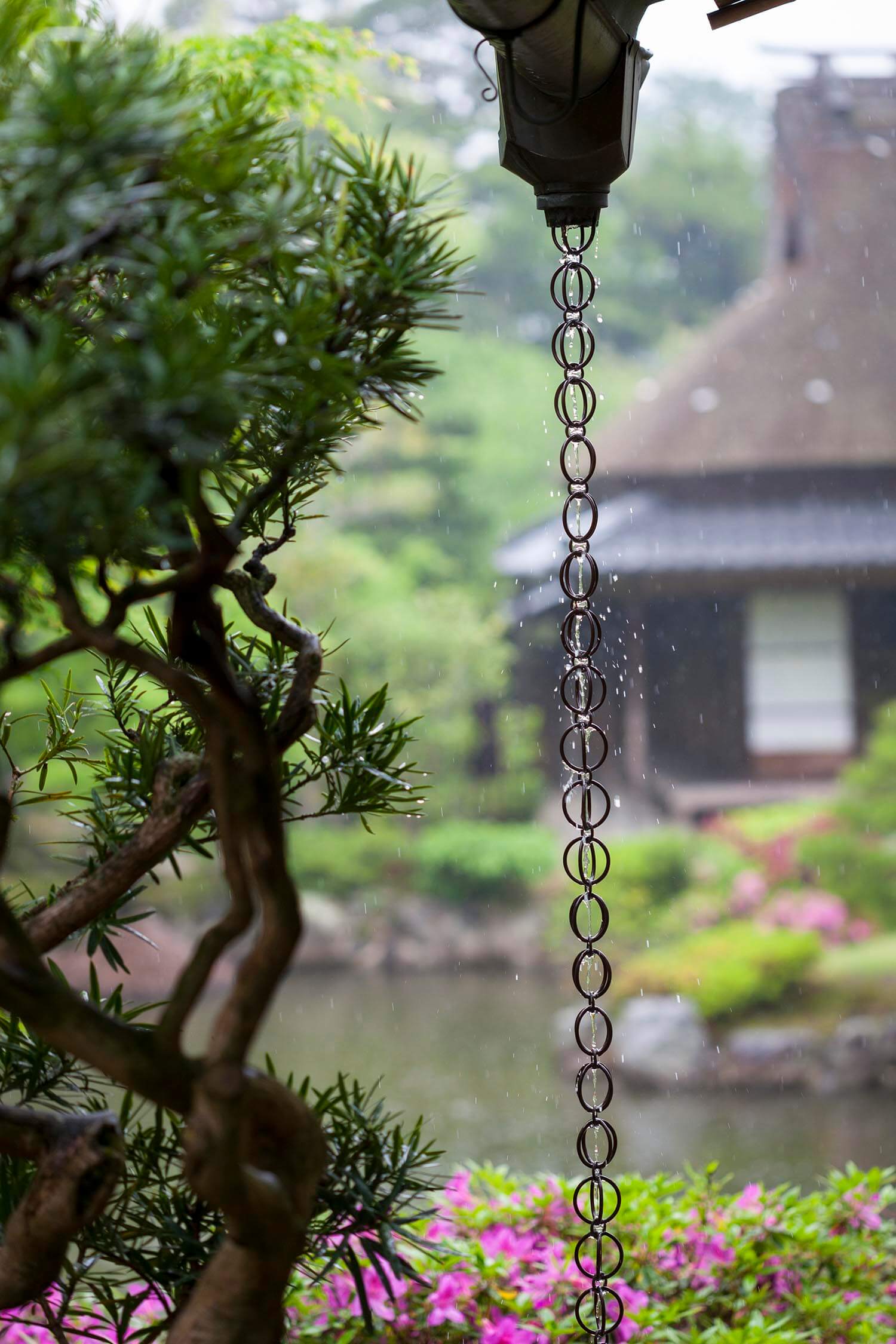
The more costly chains are typically handcrafted from the most durable and premium materials. You would have to pay a bit extra if you want the best of the best. Some will cost you a mere $10, while the others are priced over $100. You’d be surprised by how pricing differs so drastically from one chain to another. Alternatively, a ceramic cup or saucer may be used as a catch basin. To stop the water’s plunge, put a single paver tile or a few medium-sized stones underneath the chain. Moss can expand between the pebbles if it is moist on a daily basis. Under the chains, you may build a square out of redwood or cedar and fill it with tiny pebbles. It helps water to drip from the chain into the pot, making a great show.

When it rains, the Japanese sometimes place a ceramic or stoneware pot underneath the chain that is loaded with water. Using the gutter connection piece given, Rain chains are typically hung from the gap where the downspout used to be. The installation of most modern rain chains is typically easy and clear. If you live anywhere where it rains a lot, you’ll need a chain with bigger cups. The bigger the cup, the less successful it is when it comes to heavy rain. Some are greater or smaller than the rest. Cups are available in a variety of shapes and sizes, ranging from small 2-inch cups to large XL cups.Ĭups are available in a range of sizes, designs, and fabrics. Cup models splash very little except in heavy rain, making them ideal for use anywhere. They double as funnels because they have open bottoms, focusing the water from one cup into the next. They are often used in contemporary architectural styles, but they still look fine in rustic settings such as cabins and log homes.Ĭup designs outperform link chains in terms of performance and quality. Link chains, from basic link chains to more complex variations, have the airy look and clean lines. They seem to spill rather than cup types, which may be relevant if they’re going to be used near doors, screens, or walkways. Link designs are the most precise representations of the initial rain chain in the Japanese style. Other forms of powder-coated aluminum are also used. Copper is used in all of the most costly options on the market, and it develops a stunning and beautiful patina over time. Metal is used in almost all rain chains, but the form of metal used can make or break the chain’s consistency. This one-of-a-kind rain chain is a genuine eco-friendly design that also comes with a lovely gift package.

Natural materials such as bamboo, steel, copper, clay, rock, and brass are used to build the rain gutter chain. Check the comparison table and buying guide to buy the ideal rain chain for your garden. This guide aims to help you choose the best rain chains for heavy rain scenarios. There are several various types of rain chains on the U.S. Beautiful and tranquil designs inspired by Asian motifs.The gutter or downspout would merely guarantee that the water is transported to the chain properly. For this reason a rain chain structure exists. You won’t need the gutter or downspout to reach the ground, so don’t worry. When you add rain chains, you’re both beautifying and functionalizing your house.Įvery rain chain is different, so for the optimal outcomes during very heavy rain, you can tie a rain chain to a gutter or downspout.

They elegantly channel rainwater from gutters to drains or colorful water receptacles, transforming an unappealing task into a captivating water feature.Ī rain chain performs two functions: it channels rainwater to drainage and receptacles and it beautifies the exterior of a home. Rainwater may be quickly moved into a bucket or a big barrel using the right rain chains.ĭownspouts may be replaced with rain chains, which are both artistic and practical. It was put directly under the roof’s demise. They are special cups or chains constructed of copper or steel.

For more than a century, the Japanese have had to gather rainwater in their homes using a rain chain. Rain chains are well-established in Japan, where they are known as “kusari-doi”.


 0 kommentar(er)
0 kommentar(er)
